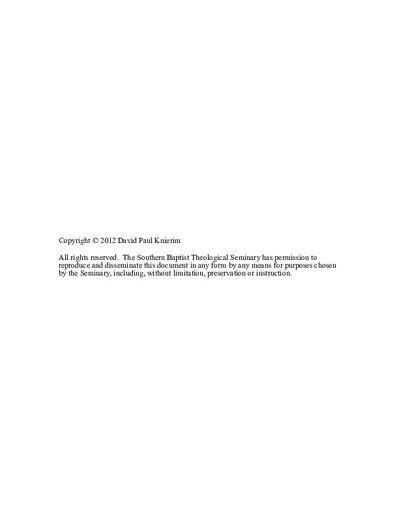| dc.description.abstract | This dissertation proposes that the church plays an active role in the salvation of its members through the proclamation of the gospel. Chapter 1 introduces the topic of the dissertation by positioning it within its current academic and nonacademic context. It then details the thesis and methodology of the dissertation.
Chapter 2 demonstrates that the church is viewed as playing an active role in the salvation of believers in church history. It examines the relationship between the soteriology and ecclesiology of four theologians who have significantly influenced the protestant reformed trajectory: Cyprian, Augustine, Luther, Calvin. It argues that through their usage of the "church as mother motif," Cyprian, Augustine, Luther, and Calvin view the church as having an active role in salvation.
Chapter 3 provides working definitions of the gospel and the church. It defines the gospel as the death, burial, and resurrection of Jesus Christ for the forgiveness of sin based upon 1 Corinthians 15:3-5. Chapter 3 proceeds by defining the church as the regenerate people of God who have accepted the gospel message by faith in Christ's death, burial, and resurrection.
Chapter 4 contends through scriptural exegesis that the proclamation of the gospel creates members of the church. The scriptural exegesis in this chapter goes in canonical order and focuses on exegeting passages that are recognized as being important in understanding the church's formation. It concludes with a summary of the scriptural data.
Chapter 5 also argues through scriptural exegesis the church is the instrument that God uses to proclaim the gospel. Like Chapter 4, it focuses on exegeting recognized passages that indicate the church's instrumental role in the proclamation of the gospel. It also concludes with a summary of the scriptural data.
Chapter 6 formulates systematically the scriptural data from Chapters 4 and 5 into a reciprocal relationship between the gospel and the church. Chapter 6 then frames the reciprocal relationship between the gospel and the church in terms of speech act theory. First, it briefly defines speech act theory and discusses why it can be applied to the reciprocal relationship between the gospel and the church. It then develops a speech act formulation of the reciprocal relationship in which the church proclaims both the locution and illocution of the gospel message and the Spirit creates the church, which is the perlocutionary effect of the church's gospel proclamation. It concludes by briefly detailing some of the theological implications of this formulation.
Chapter 7 offers a conclusion to the dissertation in which the arguments from Chapters 1 to 6 are summarized. It then proposes areas for further research. It concludes by offering some potential applications of the speech act formulation of the reciprocal relationship between the gospel and the church to the current evangelical church. | en_US |

